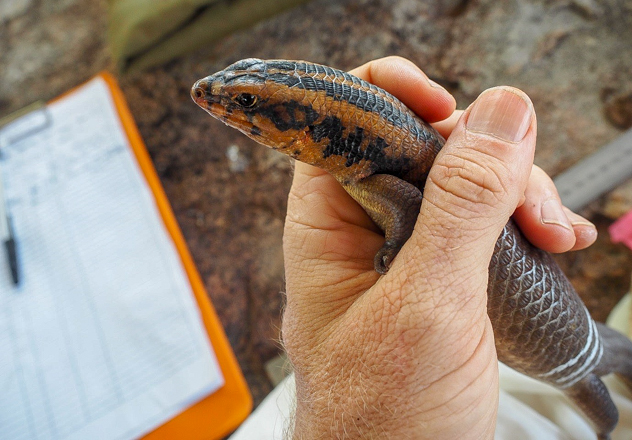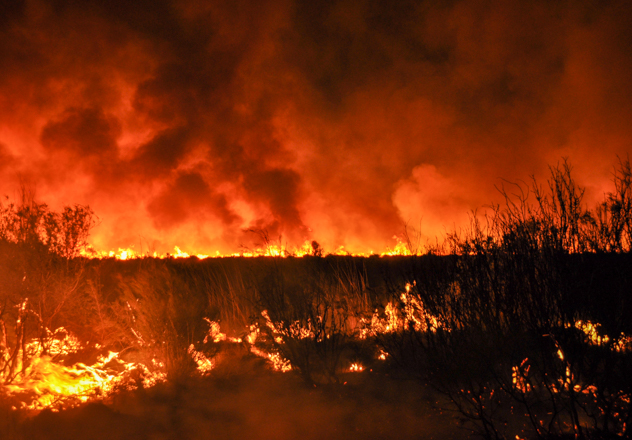Growing up to 36 cm long, the Kimberley Crevice-skink belongs to a group of large lizards in the genus Egernia, which have complex social lives and live communally in extended family groups.

 © James Smith/AWC
© James Smith/AWC
AWC ecologists in the Kimberley carried out the first ecological research into the Kimberley Crevice-skink (Egernia douglasi). The skinks had been recorded from just a handful of sites prior to AWC’s work, with just a single sighting made in the past 30 years. Since 2012, AWC has discovered new populations of the skinks at Charnley River-Artesian Range, Mornington, and Yampi. Most were found by deploying camera traps along the edge of rocky ranges.
 © Rod Beament/AWC
© Rod Beament/AWC
Further fieldwork being undertaken will investigate why the Kimberley Crevice-skink has such a restricted range, and whether poor fire regimes constitute a threat to the species.

Being one of Australia’s most elusive lizards, very little is known about the habitat preferences and behaviour of the Kimberley Crevice-skink. Preliminary work suggests that fruit forms part of their diet, and they appear to be active only during the warmer months of the wet season (September – April). The skinks were recorded moving over short distances, and likely have a relatively small home range.
Donate Now to protect endemic wildlife in the Kimberley
Donate NowCharnley River-Artesian Range has a vital role to play in protecting and restoring the endangered wildlife of northern Australia.
Mornington – Marion Downs is a model for conservation in northern Australia, protecting 580,772 hectares of the iconic Kimberley region.
AWC helps protect a population of Kangaroo Island Dunnarts on Kangaroo Island.
Koalas inhabit eucalypt forests and woodlands in eastern Australia from north Queensland through to south-east South Australia.